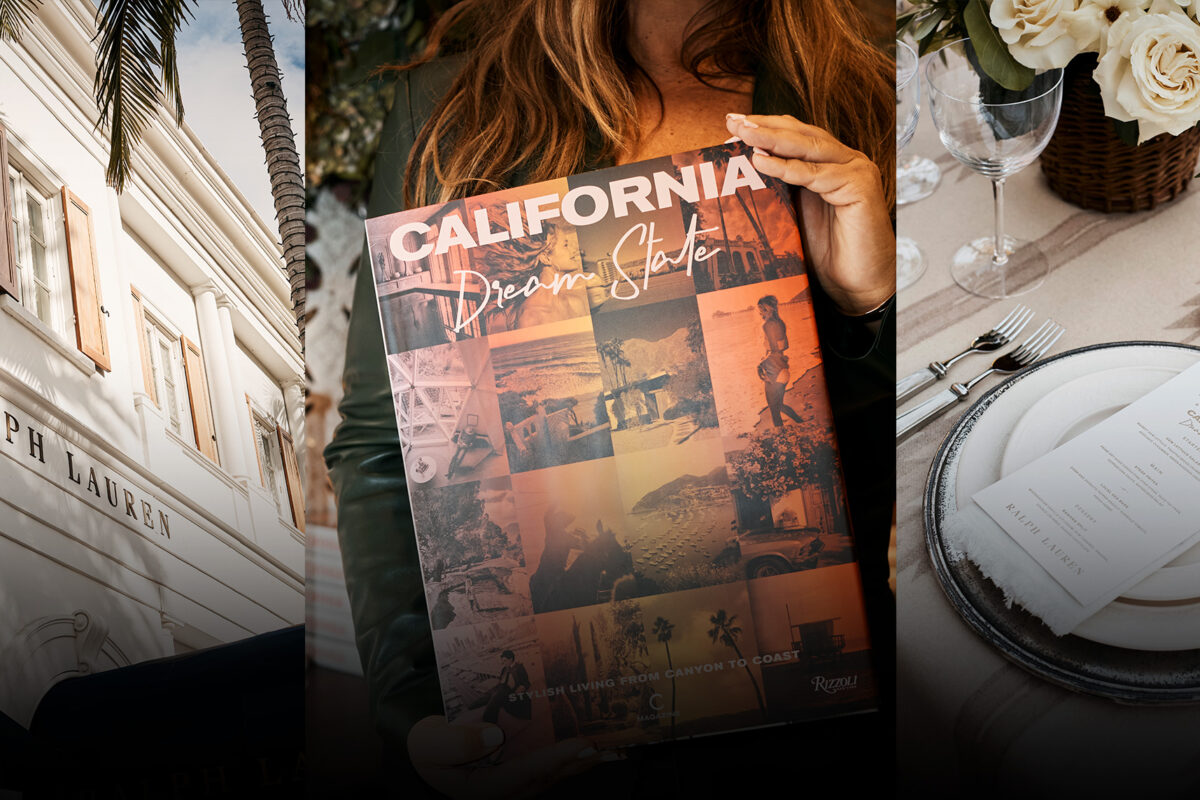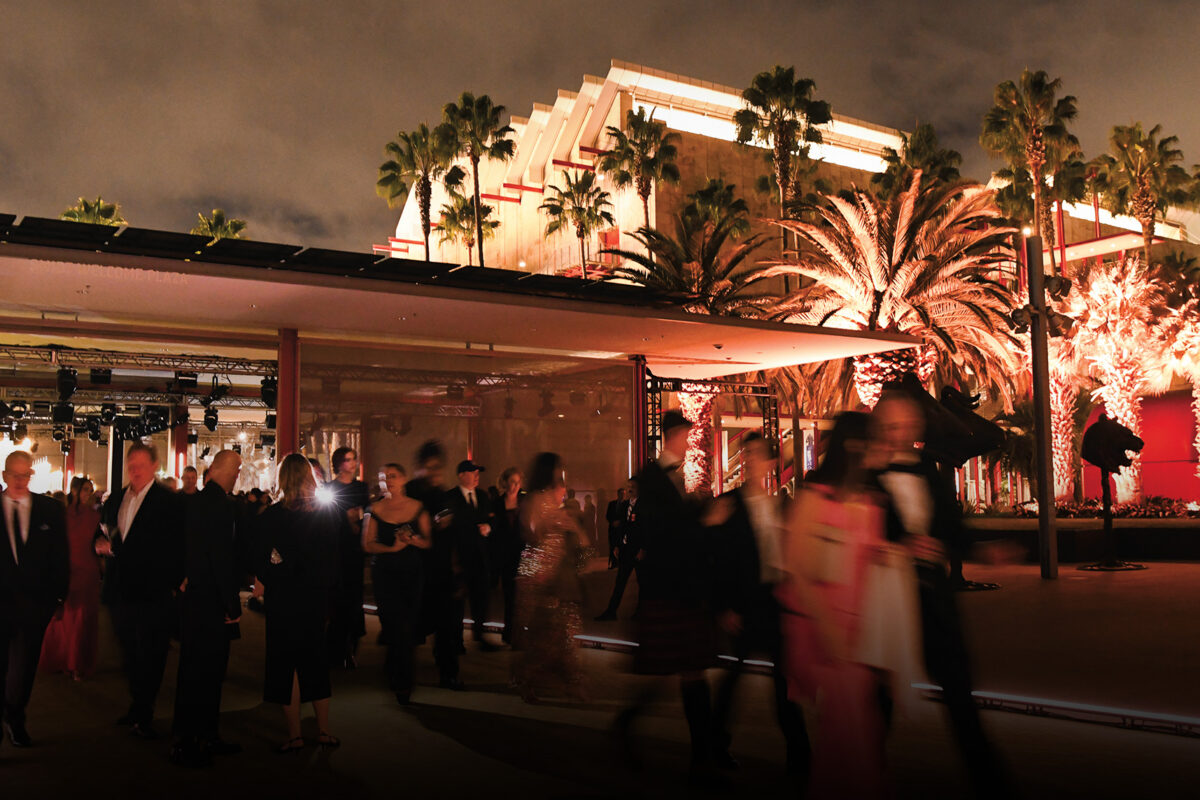Get to know MOCA’s new maestro
Words by ELIZABETH KHURI CHANDLER
Photography by NOLWEN CIFUENTES
Klaus Biesenbach, the new director of The Museum of Contemporary Art in Los Angeles, is already in all the right places: at the Gucci LACMA Art+Film extravaganza, the Hammer Museum’s annual gala in the garden, Susan Rockefeller’s birthday bash at The California Club and the Vanity Fair Oscar party with Lady Gaga. “We looked at each other and said, ‘God, we’ve come a long way!’” he says. “She was 21 when I met her — so young!”
It’s fair to say he also knows all the right people. Since he arrived in L.A. last year from New York (he’s originally from Germany), he’s been snapped with Frank Gehry, Takashi Murakami, Diane von Furstenberg and Lana Del Rey, to name a few. His reach crosses the spheres of architecture, design, fashion and popular culture. But he’s quick to remind you these relationships are long-standing, forged over 23 years as a curator at New York’s Museum of Modern Art, where he developed the Department of Film and Media (which eventually became the Department of Media and Performance Art), and as director of MoMA PS1 in Queens. “I had this role of translator between film and art and performance art,” he says. “This is a naturally grown dialogue, I’m not coming to L.A. and meeting these people.” The marketing benefits of said relationships might seem like the main reason the board of MOCA selected Biesenbach; but he brings a broader skill set.
For Angelenos, it’s been a tumultuous 11 years or so at MOCA: four directors, a $30 million bailout by philanthropist Eli Broad, artists on the board resigning in protest of last year’s gala, curators departing under complex circumstances. So naturally, anyone selected for this seat faces a Herculean task. But the reality is the museum is as financially solid as it has ever been, with an endowment of more than $130 million, thanks to several board pushes over the last six years. Plus Biesenbach possesses a level of experience and intelligence that could silence most critics.
“We need a seasoned leader, someone who embraces the arts in such an all-encompassing way and with that social justice side [Biesenbach created the public arts festival Rockaway! after Hurricane Sandy in 2012 to galvanize the community], says MOCA board member and collector Maria Bell. “That’s something people in L.A. can relate to … I’m one of many people who really believed in Klaus.”
Since Biesenbach’s arrival, he’s embarked on what amounts to a listening tour, asking everyone from founding director Richard Khoshalek to both household names and unknown artists about what this city needs. “I had never understood the city as a social space that I can spend time in and explore,” he says, referring to his outsider’s view of L.A. After he publicly compared L.A. to Berlin to The New York Times in July — which didn’t go over too well — “everyone and anyone” started telling him what he should learn about the city. His thirst for knowledge and experience is seemingly endless.
“When you are museum director, you are a host”
He began asking friends and artists: “What are the 10 places you would never think I would ever find myself?’’ And an itinerary was born. “It was a beautiful carte blanche,” he says. Jared Madere took Biesenbach to Eagle Rock in Topanga State Park for the best view of the canyon. Doug Aitken and Catherine Opie also showed him around town. Maria Bell, artist Alex Israel and Frieze L.A. executive director Bettina Korek spirited the besuited Biesenbach to Disneyland. “Understanding L.A. is understanding its relationship to fantasy and Hollywood, and there is no other place that better illustrates that than Disneyland,” Israel says. “So many artists have been inspired by it, from Mike Kelley and Paul McCarthy all the way up to the present.”
Slowly and thoughtfully, Biesenbach’s plan is taking shape. So far he’s closed the MOCA outpost at the Pacific Design Center to focus on the downtown locations. He’s reinstalled the political 1989 mural by Barbara Kruger at The Geffen Contemporary at MOCA in Little Tokyo; planted seven Japanese Yew pine trees in the Aileen Getty Plaza (with more plans to add greenery to the concrete plaza); and is working on converting the museum into a flexible warehouse space to accommodate dance and music lectures. He’s also expanded the board to include five new members, four of whom bring a worldly perspective: Adrian Cheng is a major collector from China; Marina Kellen French is a New Yorker who is a trustee at The Met; Simon Mordant is an investment banker in Sydney and chairman of the Museum of Contemporary Art Australia; and Julia Stoschek is a major collector and the founder of the Julia Stoschek Collection, a museum with branches in Berlin and Düsseldorf. There’s also Sean Parker, founder of Napster and the first president of Facebook, who brings a technological expertise to the group. Biesenbach points out that perhaps the most important change he has made was to expand the role of education director Amanda Hunt into the curatorial department and promote her to be curator of programs. “It’s my role to enable these curators, make their ideas real and help artists emerge,” he says.
“He has a surprisingly academic side, which many people don’t see,” observes Aitken, who first met Biesenbach in Berlin in the mid-1990s and has worked with him at MoMA. “He really cares about the voice of artists.”
The opportunity to work in L.A. and “build on the incredible legacy of MOCA,” is the reason Biesenbach says he took the job. One way to honor the institution’s history is with what he’s calling the MOCA benefit on May 18. Instead of a traditional gala (which was previously run by the board), Biesenbach has plans to rework the event, which in the past has honored a specific artist, into something that “turns the attention to all the artists that made, and make, and will make MOCA,” he says. This will most likely mean that if you buy a table for 12 you will be encouraged to give six of your tickets to artists.
During his 23-year tenure at MoMA PS1 and MoMA, MoMA PS1 expanded its board from 11 to 30 members and the budget tripled. The institution also vastly expanded its offerings, putting on exhibitions of lesser-known artists like Reza Abdoh and Carolee Schneemann. It’s also led revolutionary exhibitions at MoMA, including ones that have pushed the boundaries of the definition of art, such as the history-making Marina Abramović retrospective “The Artist Is Present” in 2010, which inspired multiple books and films. Another is the controversial Björk exhibition in 2015, which was praised by some but called “a discombobulated mess” by New York magazine. “The program I [stood] for in New York was incredibly inclusive,” Biesenbach says. “One of the main qualities of a museum is that it has to be generous and it has to be inclusive — artistically and generationally.”
Bell, who was on the board of PS1, remembers how he used to host gatherings at his home in the Rockaways for the local artist community, providing only his favorite foods —Diet Coke and Doritos — as an incentive to encourage others to contribute to the spread. At his goodbye party this fall at MoMA PS1 Doritos and Diet Coke were served to honor that participatory spirit. “When you are museum director, you are a host,” Biesenbach says. “You are an enabler, assisting the mission of the museum. It’s not about you. It’s about the difference you make,” he says.
On the personal side, Biesenbach might be described as a little severe but not cold: angular haircut; piercing, intelligent, green-eyed gaze; neat and trim in his well-tailored attire. He hasn’t stated publicly where he was born (apart from western Germany), but he trained as a medical doctor before founding the KW Institute for Contemporary Art in Berlin. Abramović has spoken in the press that the two had a “more than friends” relationship when he was younger. “We devoted three months together, and we decided we can have like a ‘house life.’ He would make the apple pies, but they were always burning!” she told The Observer. Today he lives alone, in a spare, all-white apartment. “I don’t collect art. It keeps you independent,” he says.
There is something intimate yet unknowable in the “window#23” pictures he posts on Instagram, part of a series he started in 2007 that captures the daily view from his apartment. Biesenbach explains he began photographing the views as a meditative practice, an act inspired by a conversation he had with longtime friend and collaborator Yoko Ono. “It’s a simple gesture of gratitude,” he says. “You wake up in the morning and you are grateful you are still there.”
MOCA’s future is just as intriguing. “It was the institution built by artists from the ground up. It needs to own that place and culture, and it needs to surprise us,” Aitken says.
“I’m taking on such an important legacy and continuing it,” Biesenbach surmises. “We are walking the walk.”
Feature image: KLAUS BIESENBACH.
This story originally appeared in the April 2019 issue of C Magazine.
Discover more CULTURE news.





